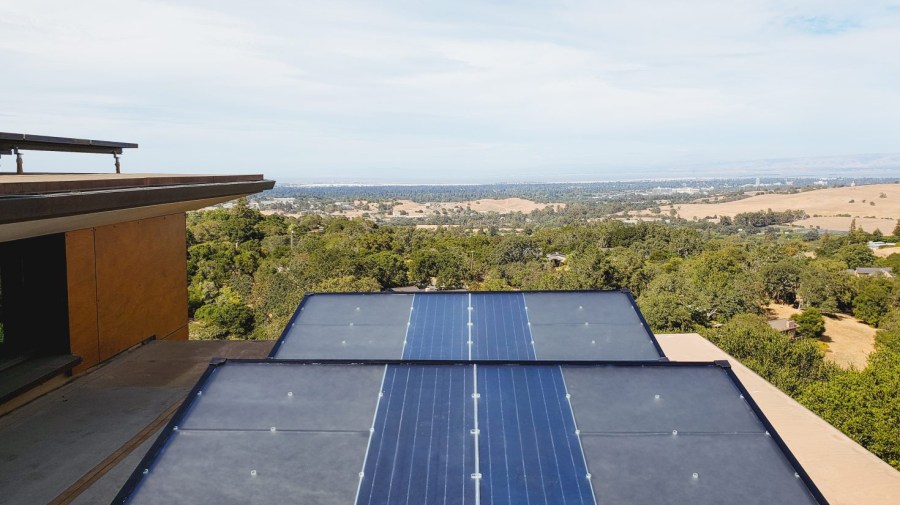Making clean water from sunshine and air

Our “Marketplace Tech” series, “How We Survive,” looks at how technology can help us adapt to climate change.
This week, world leaders are meeting at the United Nations climate summit in Madrid, talking about how to keep global warming in check.
One thing that’s going to become increasingly valuable in the future is drinking water. Droughts, storms and sea level rise all affect the availability of potable water. India, in fact, is already running out.
One startup is working on it, with tech that collects water vapor from the air and stores it as clean water. The company, Zero Mass Water, is based in the Arizona desert, and it sells what it calls hydropanels — solar-powered panels that collect water.
I spoke with Cody Friesen, the founder and CEO of Zero Mass Water, and I asked him to describe the tech. The following is an edited transcript of our conversation.
Cody Friesen: Think about water from air. Anybody who’s had a glass of cold iced tea has made water from air, right? It’s the dew on the outside of that glass. On the other side, we all have experience with when you’ve left the lid off the sugar bowl, and that sugar gets clumpy. The sugar is absorbing that water vapor. The big sciencey word here is the sugar is hygroscopic, meaning that it likes water vapor. You can imagine a nanostructured, highly hygroscopic material like sugar — not sugar — is able to do that process really, really fast. Imagine supercharged sugar, and the ability to absorb water from the atmosphere, concentrated by about 20,000 x by volume, just completely passively.
Molly Wood: Who is this for? Who is it designed for? And where did the idea come from?
Friesen: Really, anybody who wants resilience in their drinking water that is independent of the grid and infrastructure-free. So far, customers are everybody from relatively wealthy folks living in, let’s say, Berkeley, or in Dubai, all the way to folks of more modest means whose infrastructure is not great or nonexistent.
Wood: Let’s talk price, because right now the panels are pretty expensive — $6,000 or so for each household system.
Friesen: The U.S. residential install, the cost of that a lot of that is driven by the need to install just a couple panels on top of somebody’s roof. And even that amortized over its lifetime is something like 12 to 15 cents a liter. It’s still substantially cheaper than bottled water.
Wood: How important do you think that this specific technology, and technology like this, is going to be as we are forced to adapt to climate change?
Friesen: I think it’s critical, given that water, and specifically drinking water, is such a scarce resource and such a huge challenge. That’s an area that we wanted to focus on, to go get that nail, because it’s such a huge carbon footprint on the bottle waterfront. It’s a huge carbon footprint in terms of how you think about cleaning up water. It’s also the way that people are going to gain ultimate resilience. We’re not reacting to disaster with flying in crates of bottled water, but rather placing solutions that can ride through storms independent of infrastructure.

Related links: More insight from Molly Wood
In November, the company partnered with two nonprofit organizations to install a hydropanel array in a West Virginia county that will provide clean drinking water to the county’s food bank.
There’s also more reading on the water crisis in India.
Research published earlier this week in Science Daily talks about a new technique for purifying existing water using magnetic nanoparticles coated with this ionic liquid that absorbs contaminants, microplastics, lead and other impurities. Scientists just use magnets to suck the nanoparticles and all the junk they’ve collected right out of the water. I’m sorry, but sometimes technology is magic.
The future of this podcast starts with you.
Every day, the “Marketplace Tech” team demystifies the digital economy with stories that explore more than just Big Tech. We’re committed to covering topics that matter to you and the world around us, diving deep into how technology intersects with climate change, inequity, and disinformation.
As part of a nonprofit newsroom, we’re counting on listeners like you to keep this public service paywall-free and available to all.
Support “Marketplace Tech” in any amount today and become a partner in our mission.














